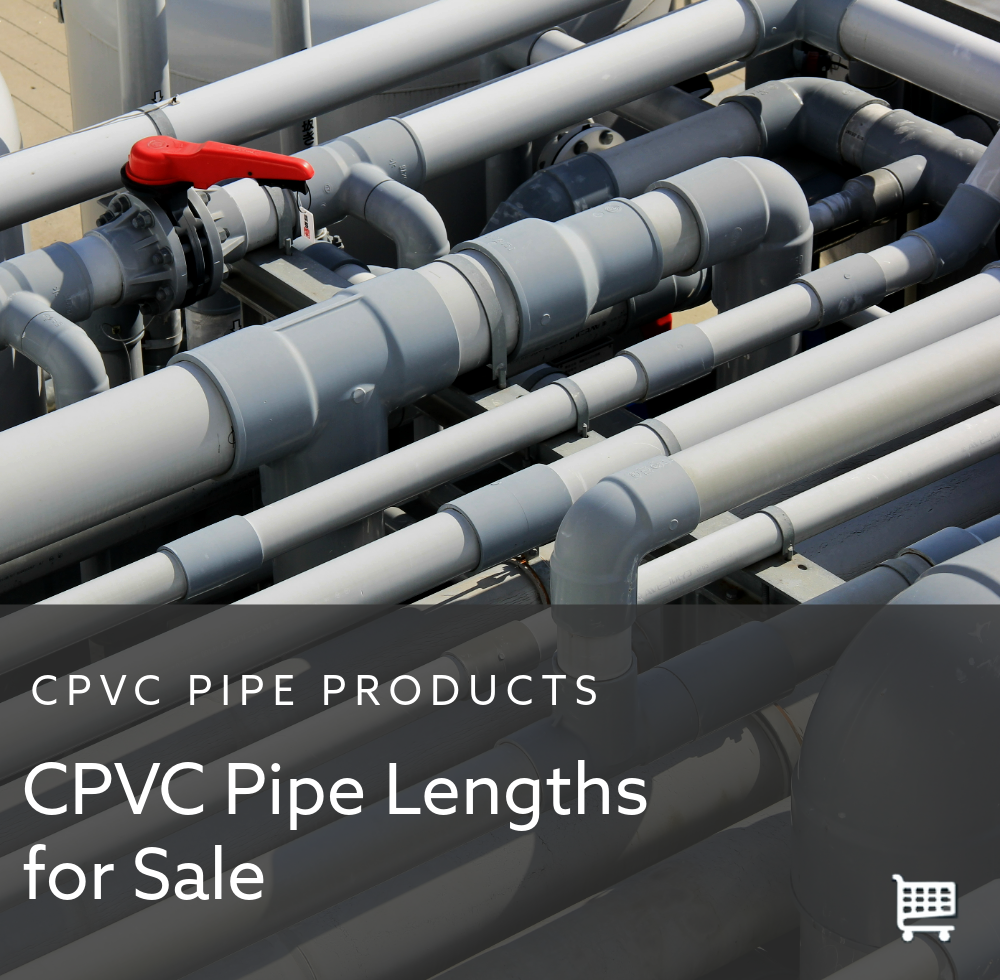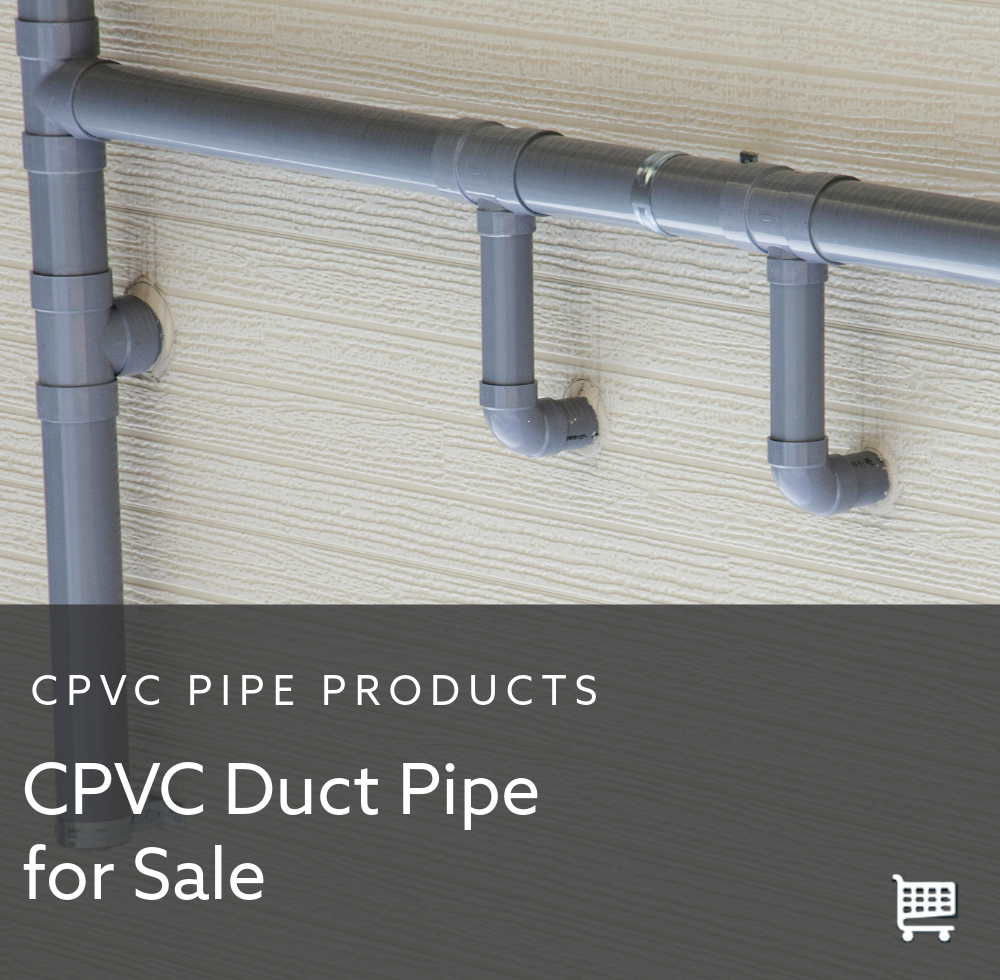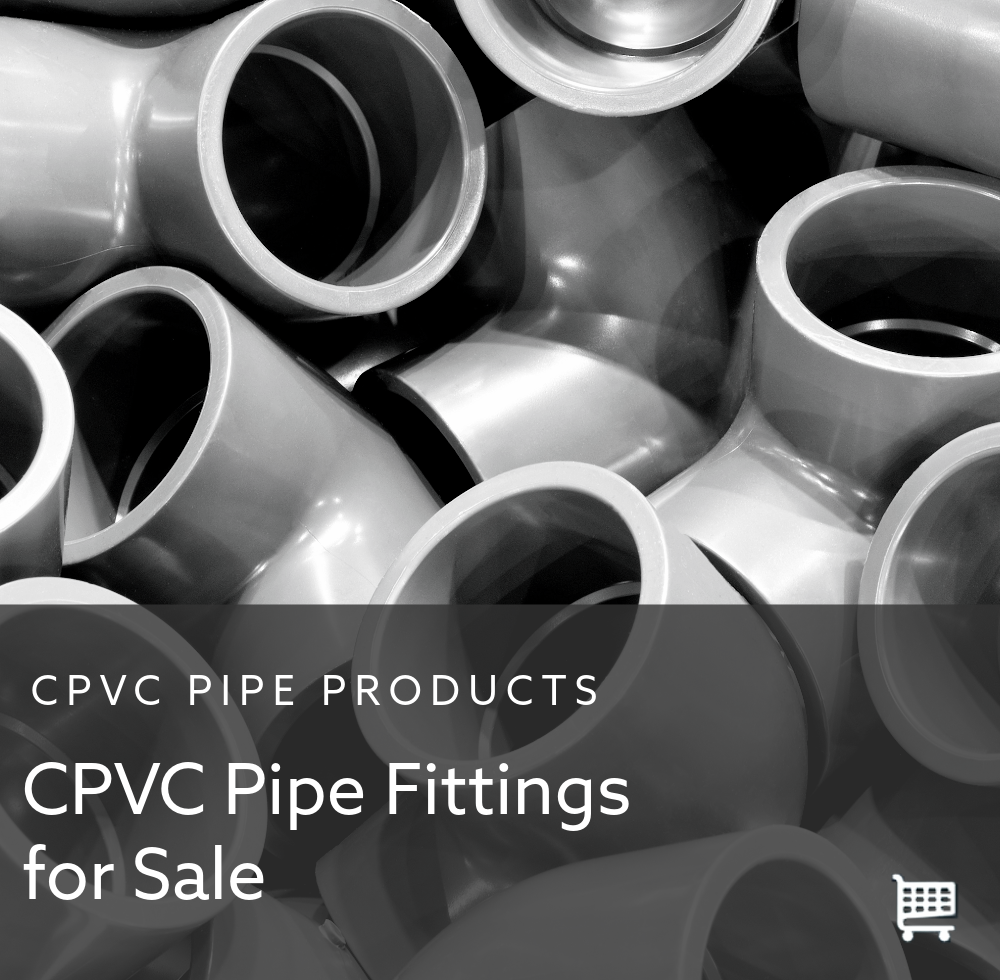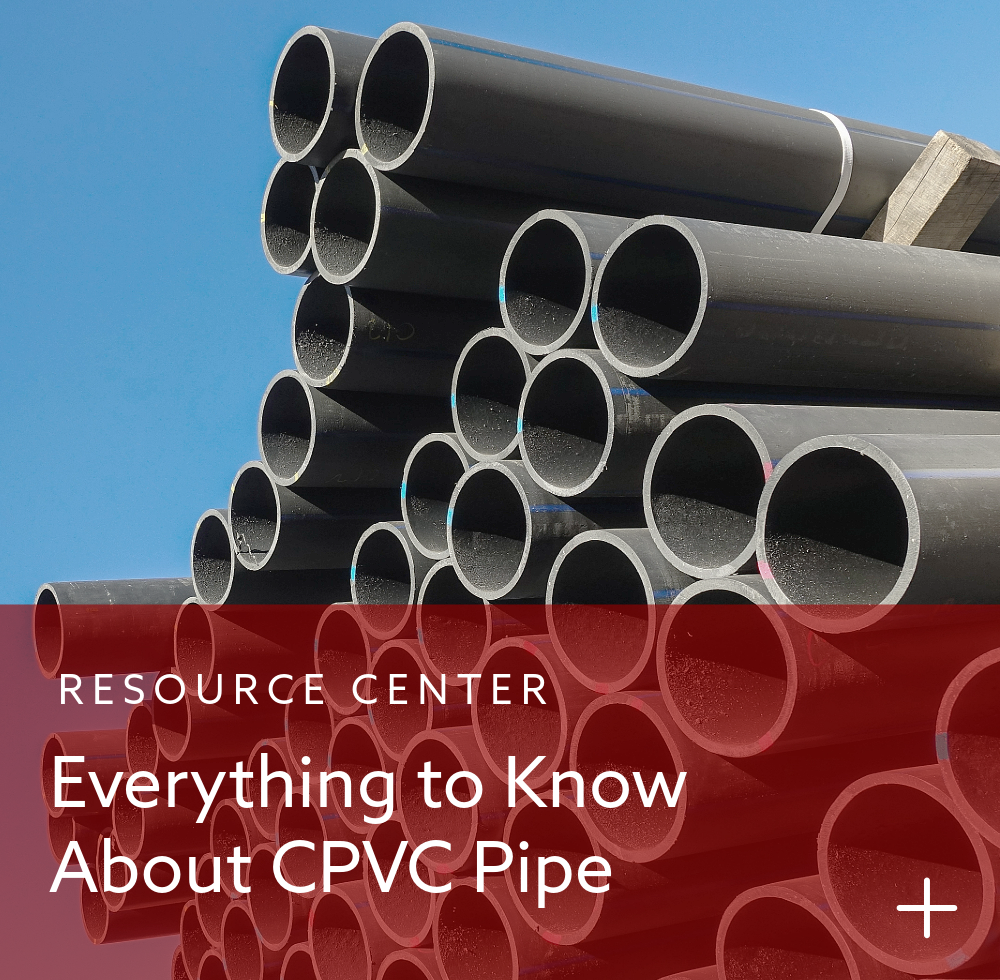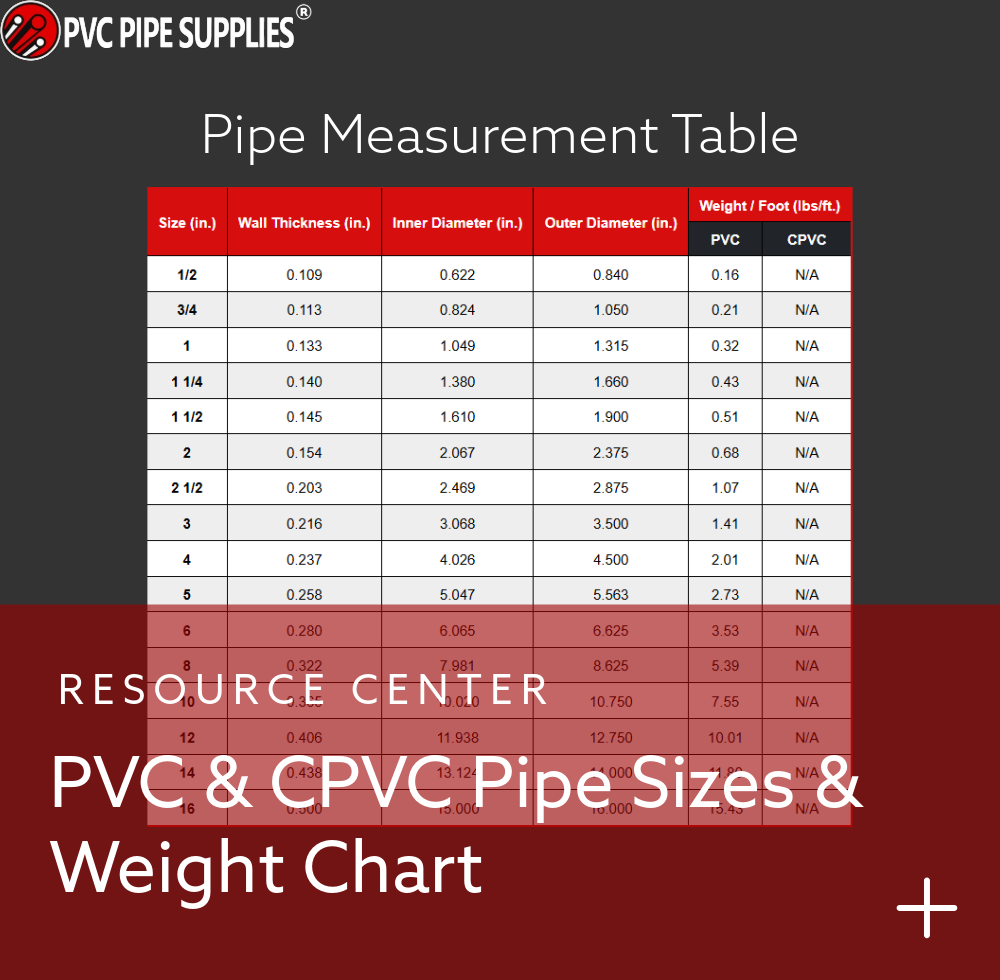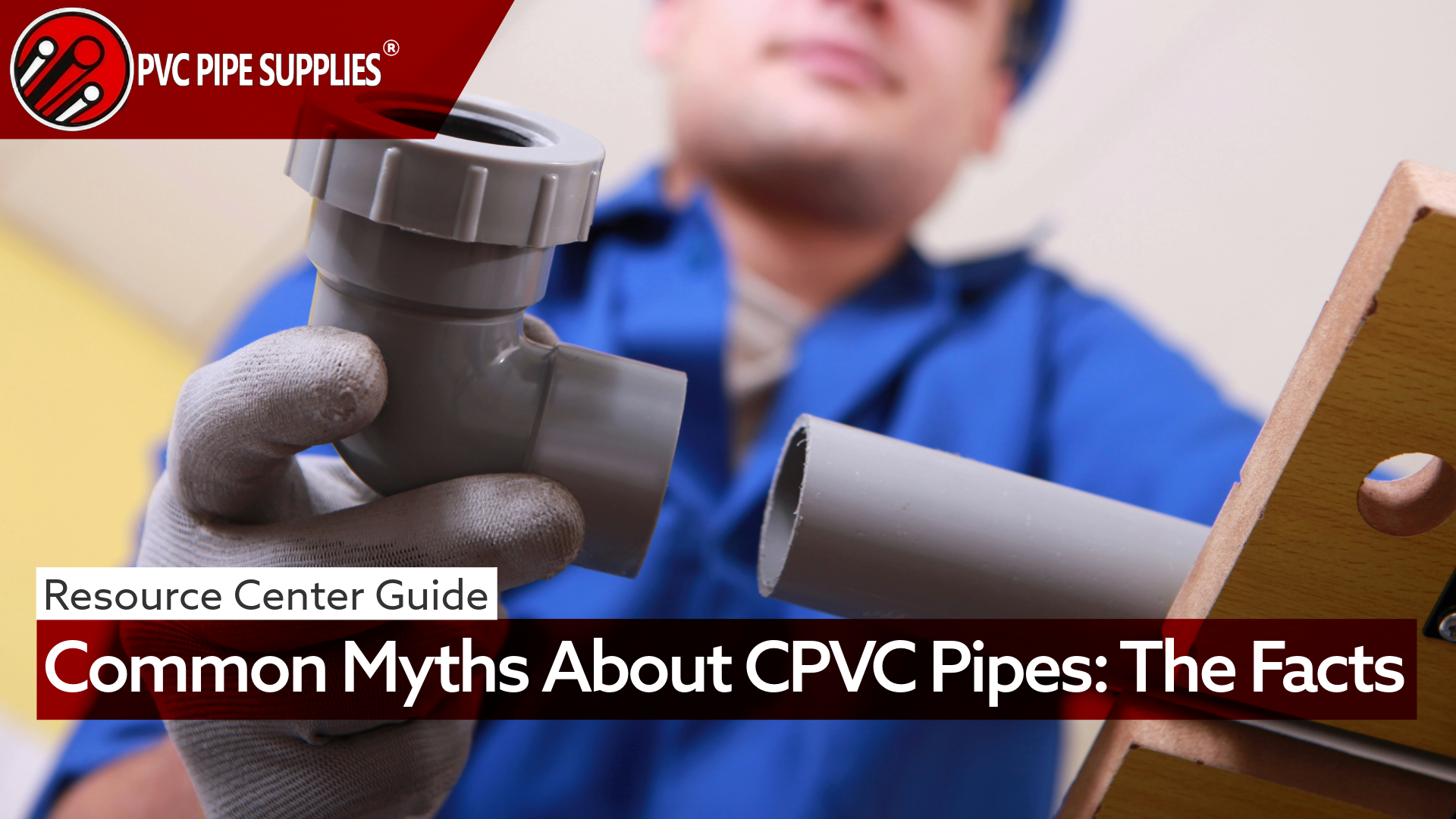 |
CPVC pipes have been a trusted solution in plumbing and industrial applications for decades. In fact, their first reported use was in 1959. However, like any product where there are only a few options for an important role, they are often surrounded by misconceptions. These myths can cloud the judgment of contractors, facility managers, homeowners (or future homeowners), and even DIYers trying to make an informed choice about what pipe to use or whether they should replace existing piping. Here, we’ll look at the most common myths about CPVC pipes to debunk them with the facts or give credence where credence is due. We’ll stress how high quality CPVC pipes, especially those made by reputable USA based manufacturers, are positioned to offer the greatest durability and long term performance when properly installed. When we talk about CPVC pipe, we mean Schedule 80 CPVC pipe made for industrial systems, CPVC CTS (Copper Tube Size) pipe for residential pipes, and CPVC duct pipe for ventilation networks. It should be noted that most misconceptions about CPVC pipe are centered around residential uses. |


CPVC pipes have been a trusted solution in plumbing and industrial applications for decades. In fact, their first reported use was in 1959. However, like any product where there are only a few options for an important role, they are often surrounded by misconceptions. These myths can cloud the judgment of contractors, facility managers, homeowners (or future homeowners), and even DIYers trying to make an informed choice about what pipe to use or whether they should replace existing piping.
Here, we’ll look at the most common myths about CPVC pipes to debunk them with the facts or give credence where credence is due. We’ll stress how high quality CPVC pipes, especially those made by reputable USA based manufacturers, are positioned to offer the greatest durability and long term performance when properly installed.
When we talk about CPVC pipe, we mean Schedule 80 CPVC pipe made for industrial systems, CPVC CTS (Copper Tube Size) pipe for residential pipes, and CPVC duct pipe for ventilation networks. It should be noted that most misconceptions about CPVC pipe are centered around residential uses.
Myth #1: CPVC Pipes Are Too Brittle
The Misconception:
CPVC pipes become brittle with age, leading to cracks or failures under normal pressure, impacts, or temperatures. Critics claim the material “dries out” over time — especially in hot water lines — and that poor solvent cementing weakens joints, making CPVC less reliable than alternatives like copper or PEX. Online users often describe older systems failing from minor bumps or routine use, fueling concerns about CPVC pipe’s long term durability.
The Facts:
Modern CPVC pipes that are made by the industry’s best manufacturers — Charlotte Pipe, Spears, Harrison, Georg Fischer — are engineered to pass ASTM testing and performance standards to withstand beyond normal stress and environmental challenges. These pipes are resistant to impact damage, especially under common use conditions. Many advances in material formulations and manufacturing processes have further improved on CPVC’s strength.
What’s more, proper installation (glue amount, type, pressure, and set times), limited or no sunlight exposure for CTS pipe, and only running liquids in the right temperature ranges (up to 200°F), prevent most concerns about brittleness. Testing and engineering data for CPVC pipes indicate they are designed to handle both cold and hot water applications without compromising their structural integrity — this would not be the reporting data from manufacturers if it were not the case: it’d not only be false advertising but dangerous falsification.
CPVC pipes don’t become UPC certified for large multi-residential complexes or industrial plants if they can’t back up their claims when tested. Also, Spears Manufacturing feels so confident about their CPVC CTS EverTuff pipe that they offer an Installer Protection Plan to defend and reimburse the contractor and cover the cost of any damage due to leaks should the pipe fail from conditions outside the installer’s control.
Takeaway:
High quality CPVC pipes, when handled and installed correctly, are anything but brittle. They deliver reliability, even in applications where durability is critical, with users reporting significant impact strength even after 10 years of use.
 |
Myth #2: CPVC Pipes Are Hard To InstallThe Misconception:CPVC pipes are hard to install, difficult to work with, complex, and require specialized tools. This belief leads many to assume that only professionals with advanced knowledge and equipment can properly handle CPVC systems. There’s a perception that CPVC installation is more prone to errors or complications compared to alternatives like PEX or copper, leading some contractors and homeowners to not recommend the pipes. |
Myth #2: CPVC Pipes Are Hard To Install
The Misconception:
CPVC pipes are hard to install, difficult to work with, complex, and require specialized tools. This belief leads many to assume that only professionals with advanced knowledge and equipment can properly handle CPVC systems. There’s a perception that CPVC installation is more prone to errors or complications compared to alternatives like PEX or copper, leading some contractors and homeowners to not recommend the pipes.
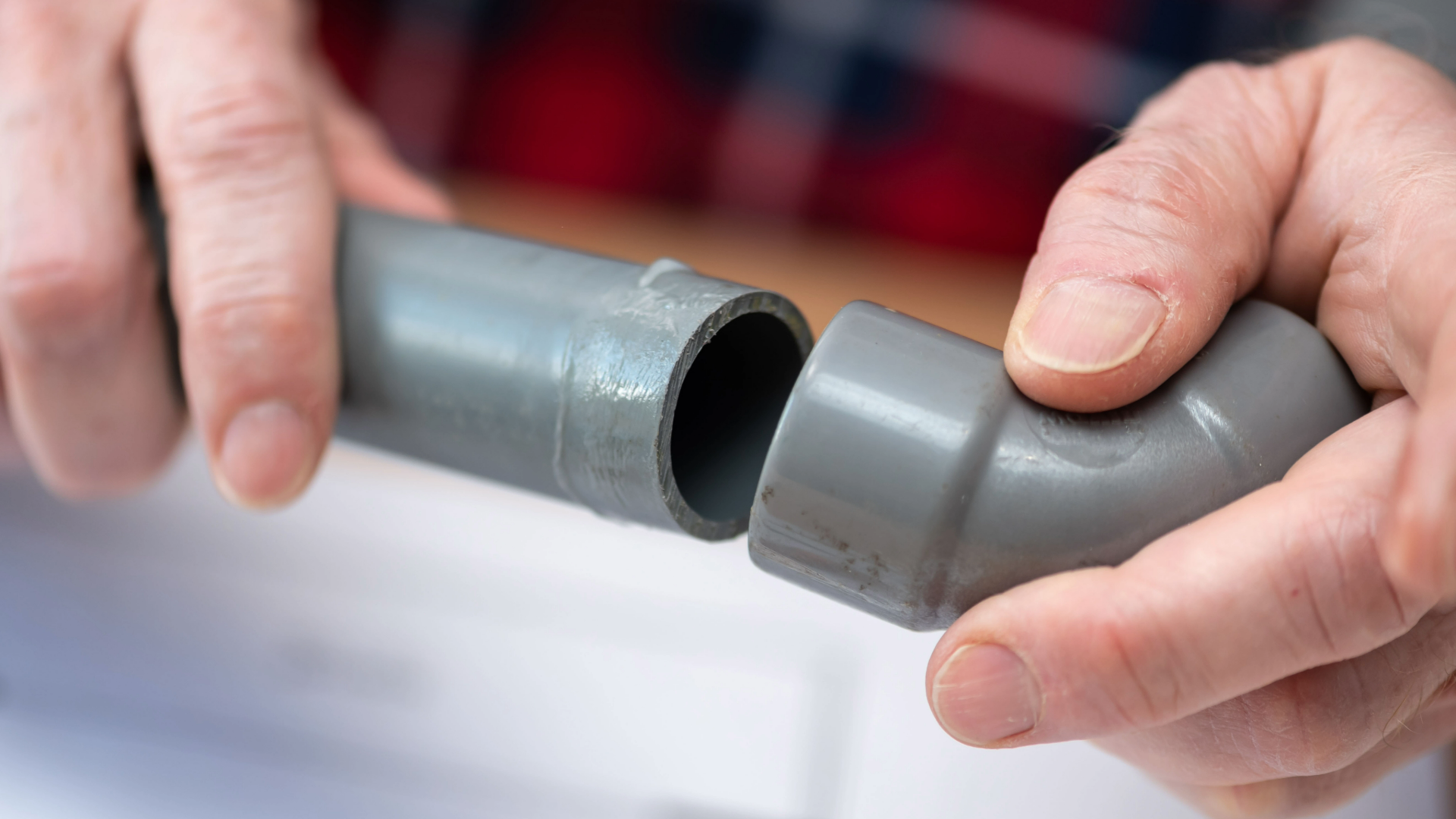

The Facts:
Plumbing is plumbing — it must be installed correctly, and each type, more or less, has its own installation method, pros and cons, ease and difficulties. Compared to metal (copper) that requires soldering and PEX that requires crimping and avoiding sharp edges, CPVC pipes are fairly user friendly in terms of installation. While they may take longer than say PEX, due to glue setting wait times, CPVC pipes rely on a simple solvent welding process that effectively cements pipes and fittings together for a tough, leak free seal.
The key is proper installation. What this means is:
- A straight cut pipe deburred or any rough edges – often done with a pipe saw and a deburring tool (or sandpaper).
- The right primer and cement rated for CPVC – readily available anywhere that sells plumbing.
- A solid applying technique using sufficient glue and pressing pipes together with pressure and a twist.
- Removing excess glue – with a rag or towel.
- Then, allowing the recommended amount of time to pass for the glue to cure based on temperature and humidity.
CPVC pipe does not require any specialized tools for installation. On the contrary, copper and PEX pipe do. Also, CPVC pipe is lightweight and solid, which makes handling, positioning, and transporting easy and reduces fears of striking nails or other sharp objects.
Takeaway:
CPVC pipes simplify plumbing installation with a design and method that minimizes the complexity, saving time and money for contractors and homeowners alike.
Myth #3: CPVC Pipes Have a Short Lifespan
The Misconception:
CPVC pipes have a short lifespan – maybe up to 10 years. They degrade quickly due to brittleness, chlorine degradation, and need regular replacement, and therefore, are a less reliable option for long term use.
The Facts:
When sourced from quality distributors – us here at PVC Pipe Supplies – who source our products from trusted American manufacturers – such as Georg Fischer and Charlotte Pipe – CPVC pipes can last for decades, even sometimes exceeding 50 years under ideal operating conditions. While brittleness can occur over time, it is often due to external factors like UV exposure (for CTS pipe) or external chemicals, aggressive water chemistry, or improper installation. CPVC’s chlorinated structure provides excellent resistance to chlorine and other chemicals, making it a reliable choice for potable water systems.
Failures are typically linked to poor installation practices or the use of low quality materials, rather than inherent flaws in CPVC itself.
Unlike metal pipes, CPVC pipes do not rust or corrode when exposed to water, minerals, or low water pH. This feature makes CPVC an excellent alternative for less-than-ideal plumbing conditions, such as hard water with high mineral content or industrial applications involving chemical conveyance.
Professional grade manufacturers also provide comprehensive testing, standard certification (NSF 14, NSF 61, ASTM D 1784, ASTM F 441, etc.), and warranties that further support the lifespan claims of CPVC pipe.
Takeaway:
While CPVC pipes are not immune to issues, (no pipe is), they are a reliable and durable material when used appropriately. Their resistance to chlorine and other chemicals is a key advantage, but like any material, they require proper installation and maintenance to achieve their full potential.
 |
Myth #4: CPVC Pipes Need Frequent ReplacementThe Misconception:CPVC systems are prone to frequent failures that will lead to costly and repeated replacements due to brittleness, chemical degradation, and joint failures. |


Myth #4: CPVC Pipes Need Frequent Replacement
The Misconception:
CPVC systems are prone to frequent failures that will lead to costly and repeated replacements due to brittleness, chemical degradation, and joint failures.
The Facts:
- Longevity: High quality CPVC pipes are designed to last 30 to 50 years or more under proper conditions. However, some reports suggest failures as early as 10 to 15 years, but this is often due to poor installation, environmental factors, or the use of incompatible materials.
- Brittleness and Degradation: CPVC can become brittle over time, especially when exposed to UV light (for models not made with sunlight protection), high temperatures, or certain chemicals like hydrocarbons. This brittleness can lead to cracks and leaks.
- Installation Sensitivity: Many failures are linked to improper installation practices, such as excessive solvent cement, the wrong cement, inadequate support, or exposure to incompatible materials like fire caulks and sealants.
- Localized Failures: Failures often occur in specific areas where CPVC interacts with incompatible conditions or experiences high stress, rather than occurring across the entire system.
Takeaway:
CPVC pipes are a low maintenance solution that offers consistent performance without frequent replacement costs. Failures are typically situational rather than systemic.
The Role of Quality Manufacturing
|
The reliability of CPVC pipes lies in their quality. Pipes from reputable manufacturers have to meet and pass strict and thorough industry standards like ASTM F441 and NSF International certifications to ensure durability, safety, and performance. Additionally, NSF certification is an independent and external inspection and review process acting, in a manner, as a checks and balances for manufacturer’s products. |
 |
The reliability of CPVC pipes lies in their quality. Pipes from reputable manufacturers have to meet and pass strict and thorough industry standards like ASTM F441 and NSF International certifications to ensure durability, safety, and performance. Additionally, NSF certification is an independent and external inspection and review process acting, in a manner, as a checks and balances for manufacturer’s products.
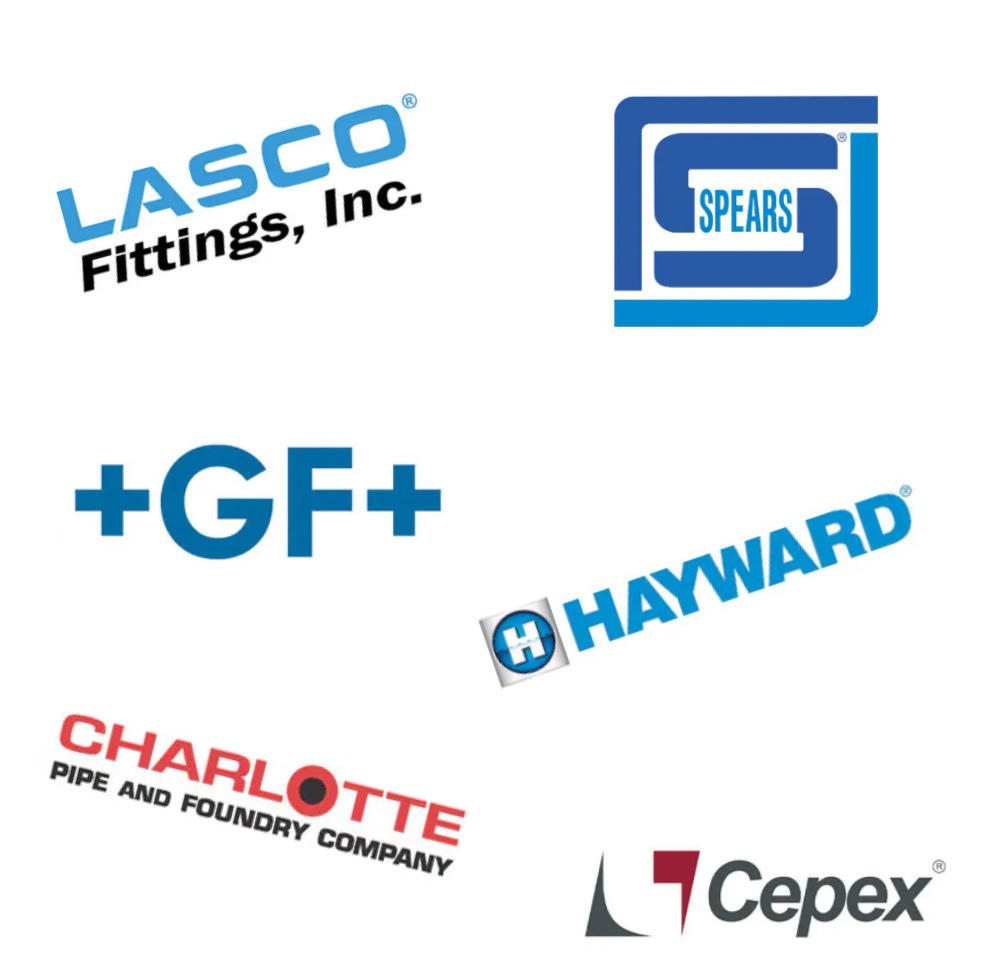

To put it simply, high quality CPVC products must undergo rigorous testing for impact resistance, chemical compatibility, and thermal aging to verify that they meet the performance requirements set by engineers and regulators in plumbing and building codes. Trusted manufacturers, and suppliers, will also provide technical documentation and expert support to answer questions, provide clear guidelines, as well as simplify installation and maintenance.
No Perfect Pipe: Understanding Material Trade Offs
It's important to recognize that every piping material — be it PEX, copper, PVC, ABS, Polybutylene, or CPVC — comes with its own set of strengths and potential challenges. Over time, all pipes are subject to conditions like water chemistry, chemical damage, temperature fluctuations, and installation quality, which can affect longevity.
No material is entirely immune to wear or the need for eventual replacement. To ensure the longest and most trouble free service life, always choose the most suitable piping made from reputable manufacturers that use the highest quality materials, if your budget allows. Investing in trustworthy products up front will make a significant difference in performance reliability long term.
Resources Supporting the Performance and Trustworthiness of CPVC Pipe
- American Society for Testing and Materials: ASTM F441 / F441M-20 | Standard Specification for Chlorinated Poly(Vinyl Chloride) (CPVC) Plastic Pipe, Schedules 40 and 80
- American Supply Association: Industry Fights Back on Misleading Report on PVC Pipe
- Lubrizol Advanced Materials: The Durability of CPVC in Harsh Conditions
Why Choose CPVC Pipes?
CPVC pipes offer valuable benefits:
- Cost Effective: Affordable and easy to install.
- Durable: Resistant to corrosion, abrasion, and chemical damage.
- Versatile: Ideal for residential, commercial, and industrial applications.
- Reliable: Backed by certifications, performance guarantees, and detailed documentation.
Why Choose CPVC Pipes?
CPVC pipes offer valuable benefits:
- Cost Effective: Affordable and easy to install.
- Durable: Resistant to corrosion, abrasion, and chemical damage.
- Versatile: Ideal for residential, commercial, and industrial applications.
- Reliable: Backed by certifications, performance guarantees, and detailed documentation.
 |
Get Your Plumbing from PVC Pipe SuppliesCPVC pipes have garnered widespread acceptance as well as misconceptions. Myths surrounding their performance, lifespan, and installation challenges stem largely from outdated information, poor installation, or using substandard products. When sourced from reputable, USA based manufacturers, particularly those that use top tier Corzan® material, CPVC pipes prove to be a competitive option for contractors, businesses, and homeowners. Don't let misconceptions create unnecessary fear and steer you away from using CPVC. Invest in professional CPVC pipes today from PVC Pipe Supplies and see the difference for yourself. |
Get Your Plumbing from PVC Pipe Supplies
CPVC pipes have garnered widespread acceptance as well as misconceptions. Myths surrounding their performance, lifespan, and installation challenges stem largely from outdated information, poor installation, or using substandard products.
When sourced from reputable, USA based manufacturers, particularly those that use top tier Corzan® material, CPVC pipes prove to be a competitive option for contractors, businesses, and homeowners.
Don't let misconceptions create unnecessary fear and steer you away from using CPVC. Invest in professional CPVC pipes today from PVC Pipe Supplies and see the difference for yourself.


